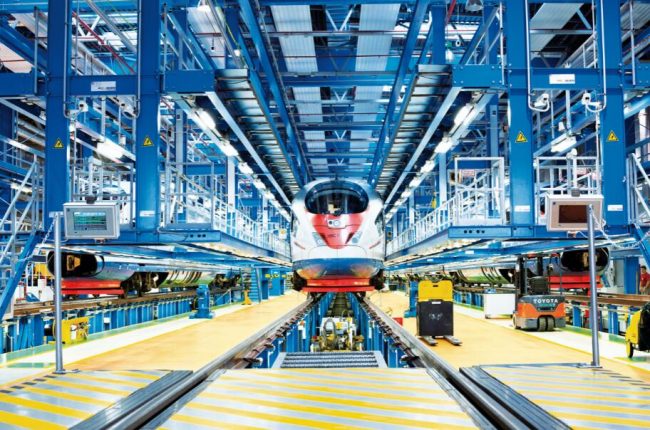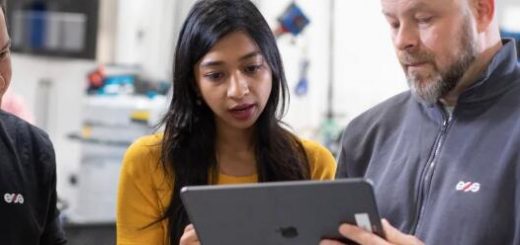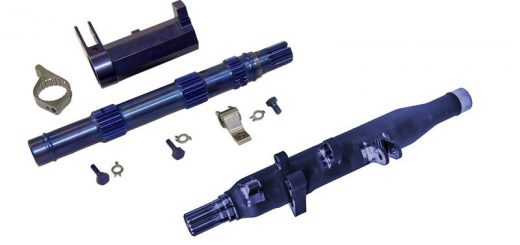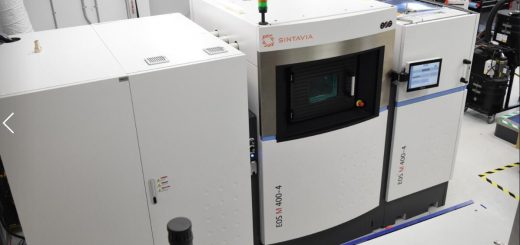Siemens Mobility Further Invests in Stratasys 3D Printing Solution to Support 30-Year Digital Rail Maintenance Project
Having successfully implemented Stratasys’ 3D printing to produce parts for the German and UK rail industries, Siemens Mobility Services has continued its investment in Stratasys technology to support the expansion of its rail maintenance operations in Russia. This includes two new industrial-grade Stratasys Fortus 450mc 3D Printers for part production.

Leveraging its rail domain knowledge and Stratasys 3D printers, Siemens Mobility is able to rapidly and cost-effectively produce spare parts for the RZD high-speed Sapsan train fleet. Image via Business Wire
The decision comes in line with a recent business win for Siemens Mobility to build 13 additional high-speed Velaro trains for Russian train company, RZD, including an agreement to maintain and service the trains for the next 30 years. This is already the third Velaro order from RZD for Sapsan fleet due to excellent availability of Sapsan trains in daily operation, supplementing an existing fleet of 16 trains.
The two Fortus 450mc 3D Printers have been installed in St. Petersburg and Moscow, enabling Siemens Mobility Russia to transform its maintenance operations. Leveraging Siemens Mobility’s rail domain knowledge and Stratasys printers, the team is able to rapidly and cost-effectively 3D print rail replacement parts on-demand. The investment marks the start of Siemens Mobility’s ‘Easy Sparovation Part’ network in Russia, which aims to optimize services using 3D printing and a digital inventory of original train parts, facilitating the in-house replacement and production of spare vehicle components.
Dedicated to servicing the existing 16 and additional 13 planned trains for the next 30 years, Siemens Mobility Russia is working with more than 99% fleet availability record.
“These availability figures would be physically impossible to achieve through external part sourcing and traditional manufacturing techniques alone, but Stratasys’ FDM 3D printers gives us the capability to cost-effectively produce the parts in-house, partially eliminating the need for warehousing or tools for a selected range of items,” said Alexey Fedoseev, Head of Customer Services, Siemens Mobility Russia. “We have already seen the success of the Siemens Mobility ‘Easy Sparovation Part’ business in Germany, where this technology has provided us time-per-part savings of up to 95% compared to traditional manufacturing methods.”
By storing all part data online, Siemens Mobility can access and replace older or newer train parts ad-hoc to meet stringent time limits.
“The manufacture and delivery of an additional 13 new Velaro trains will see us work on multiple vehicles over a long period of time, and within very strict time constraints. As a result, 3D printing makes for a perfect add-on to aid our production and provides us with the flexibility to replace and create parts ourselves, anytime they are needed,” adds Fedoseev.
The Fortus 450mc 3D Printers allow Siemens Mobility to print rail parts in industrial-grade materials, with highly durable properties that can survive Russia’s extreme temperatures. In particular, Stratasys provides materials which are the key to achieving the material certification of interior train cabin parts from the industry’s regulatory bodies.
Bjoern Richter, Strategic Account Manager Siemens, Stratasys, comments, “Thanks to the efficiency-driving capabilities of 3D printing, it’s no surprise that rail maintenance and service providers are continuing to adopt the technology to boost customer service, maintenance, and part-manufacturing. Siemens Mobility is certainly a pioneer in this regard, driving the uptake of this technology within the rail and mobility sector. We continue to collaborate closely to ensure our solution best addresses the specific needs of this sector and explore entirely new application uses for 3D printing within transportation.”
Source: Bussiness Wire




Recent Comments